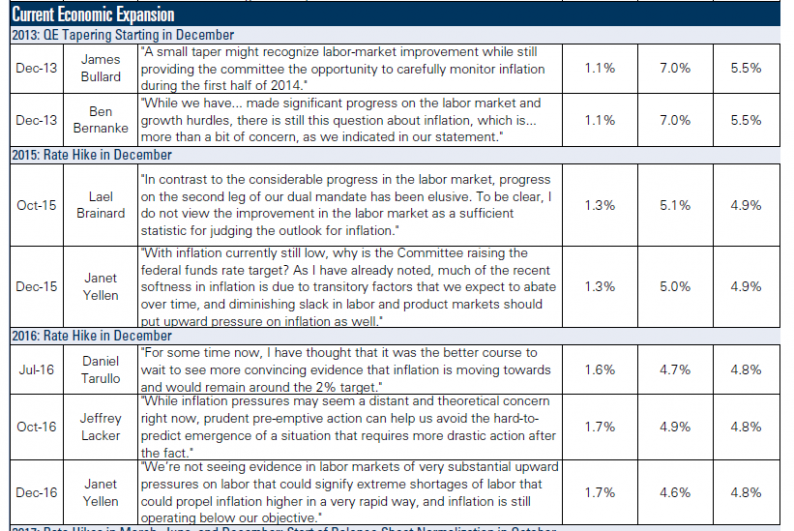Inflation and unemployment are often considered to have an inverse relationship. When employment rates are low, there is competition for workers and wages go up, assuming supply and demand markets are functioning. But with unemployment at 4.1% in November, its lowest rate since 2000 and beyond what the US Federal Reserve officially considers a sustainable long-run rate, inflation “has continued to disappoint,” a Goldman Sachs report noted. What will this mean for Fed rate hikes in 2018? The Goldman report comes as Bank of America Merrill Lynch also noted that the historic relationship between unemployment and interest rates, as measured in the Phillips Curve, might be weakening.

Inflation and unemployment: With inflation limping along will the Fed raise rates?
The Fed is eying three rate hikes in 2018, its own dot plots project. But with inflation limping along – it hit a near-term low in August at 1.3% — are rate hikes warranted? Will the traditional correlation between inflation and unemployment hold?
Looking at market-based inflation expectations, Goldman’s US Economics and Rates Strategy team notes that ten-year breakeven inflation expectations are at 1.9% now, down from 2.08% post-election when the potential for fiscal stimulus was on the table.
These muted projections are having an impact across the yield curve.
“The inflation options market also prices CPI inflation to remain close to the Fed’s target and assigns historically very low chances of upside inflation surprises,” the Goldman report observed. “This lack of concern about inflation risk has helped reduce the term premium—the extra compensation for holding longer-dated bonds exposed to larger price fluctuations—lower interest rate volatility, and flatten the yield curve.”
But the outlook heading into 2018 may be, in part, riding the momentum of 2017.












Leave A Comment